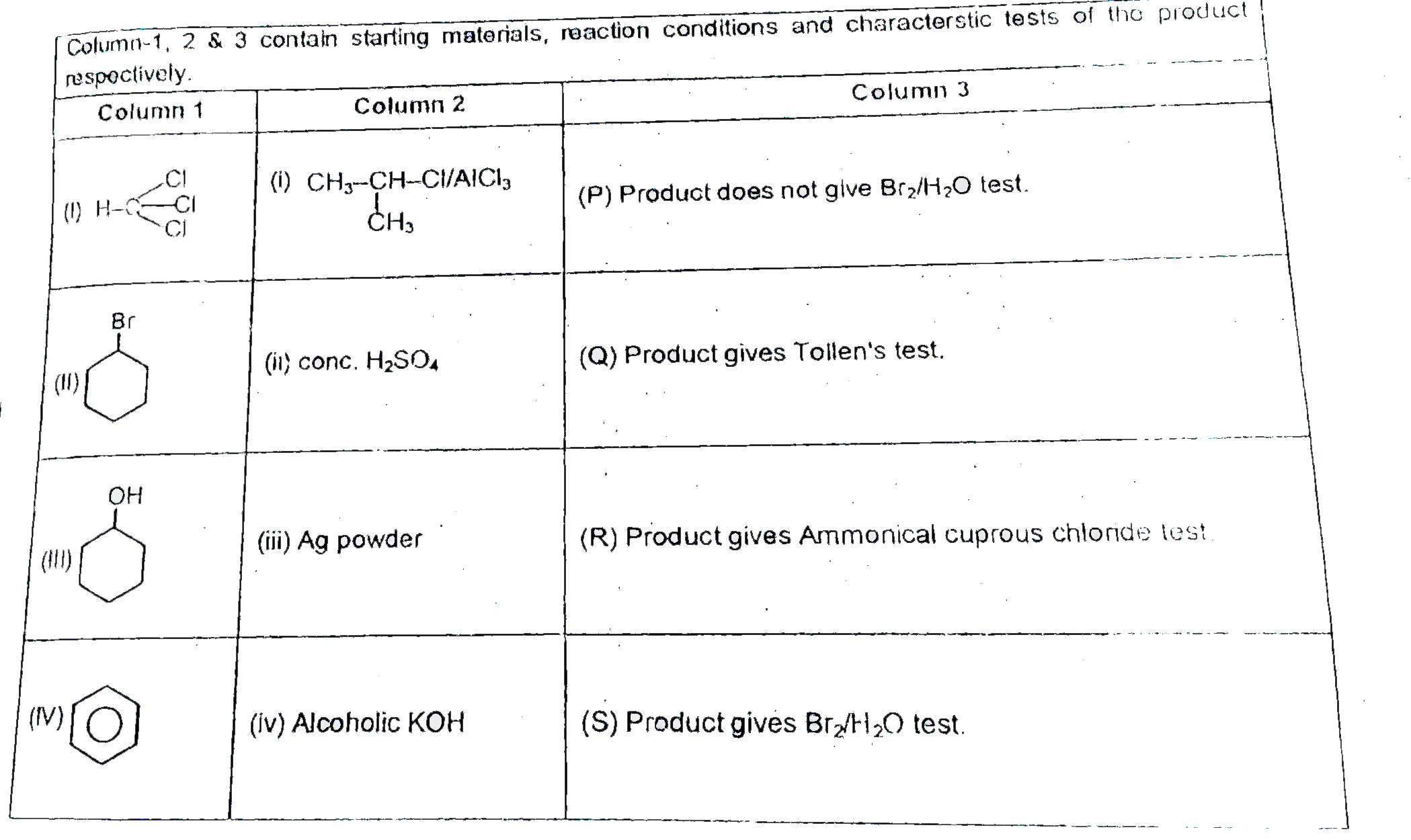A compound (C5H8) gives with ppt. with ammonical AgNO3 and on reduction followed by monochlorination it gives 4 structrual monochloro products. What is the possible structure of compound ?
CH3−CH2−CH2−CH=CH2
CH3−CH2−C≡CH
(CH3)2CH−C≡CH
CH2=CH−CH2−CH=CH2
To solve the problem, we need to analyze the information given about the compound C5H8.
Step 1: Identify the functional groups
The compound C5H8 gives a white precipitate with ammonical AgNO3. This indicates the presence of a terminal alkyne (triple bond) because terminal alkynes react with ammonical silver nitrate to form a white precipitate of silver acetylide.
Step 2: Determine the structure of the compound
Since the compound is C5H8 and has a terminal alkyne, we can start by writing a general structure for a terminal alkyne:
- The general formula for a terminal alkyne is CnH2n−2. For C5H8, we can deduce that it is indeed a terminal alkyne.
- The simplest structure that fits this formula is 1-pentyne, which is CH3CH2C≡CH.
Step 3: Reduction of the alkyne
When we reduce the terminal alkyne (1-pentyne), it can be converted into an alkene. The reduction can yield 2-pentene or 1-pentene depending on the conditions.
Step 4: Monochlorination
Upon monochlorination of the resulting alkene, we can obtain multiple structural isomers. The possible structural isomers of monochlorinated products from 2-pentene would be:
1. 2-chloro-1-pentene
2. 3-chloro-1-pentene
3. 2-chloro-2-pentene
4. 3-chloro-2-pentene
Conclusion
Thus, the possible structure of the compound C5H8 is 1-pentyne, which can produce four structural monochloro products upon reduction and monochlorination.
Final Answer
The possible structure of the compound C5H8 is 1-pentyne.
---
The compound C5H8 gives a white precipitate with ammonical AgNO3. This indicates the presence of a terminal alkyne (triple bond) because terminal alkynes react with ammonical silver nitrate to form a white precipitate of silver acetylide.
Since the compound is C5H8 and has a terminal alkyne, we can start by writing a general structure for a terminal alkyne:
- The general formula for a terminal alkyne is CnH2n−2. For C5H8, we can deduce that it is indeed a terminal alkyne.
- The simplest structure that fits this formula is 1-pentyne, which is CH3CH2C≡CH.
When we reduce the terminal alkyne (1-pentyne), it can be converted into an alkene. The reduction can yield 2-pentene or 1-pentene depending on the conditions.
Upon monochlorination of the resulting alkene, we can obtain multiple structural isomers. The possible structural isomers of monochlorinated products from 2-pentene would be:
1. 2-chloro-1-pentene
2. 3-chloro-1-pentene
3. 2-chloro-2-pentene
4. 3-chloro-2-pentene
Thus, the possible structure of the compound C5H8 is 1-pentyne, which can produce four structural monochloro products upon reduction and monochlorination.
The possible structure of the compound C5H8 is 1-pentyne.
Topper's Solved these Questions
Similar Questions
A compound P(C5H6) gives positive Bayer test and on hydrogentation from a hydrocarbon B(C5H10) which gives only monochloro product. The compound 'P' is.
View SolutionAn organic compound A(C4H9Cl) on the reaction with Na/diethly ether gives a hydrocarbon which on monochlorination gives only one chloro derivative then, A is
View Solution
Knowledge Check
- Question 1 - Select One
An alkane C6H14 gives two monochloro derivatives on chlorination. Its possible structure is
ACH3CH2CH2CH2CH2CH3BCH3−C∣CH3H−CH2CH2CH3CCH3−C∣CH2CH3H−CH2CH3DCH3−CH3∣CH−CH3∣CH−CH3
How many products (structural isomers) are formed by monochlorination of following compound ?
 View Solution
View SolutionAn organic compound A(C4H6CI) on reation withNa/diethyl ether gives a hydrocarbon which on monochlorination gives only one chloro derivative A is .
View SolutionWhich of the following compound will give four monochloro (structural) product on monochlorination.
View SolutionA compound give violet flame rest and gives a white ppt with AgNO3 .The compound is
View Solution
Which of the following set gives the product that give two monochloro structural products after reaction with Cl/hv ?View SolutionA compound (C5H8) reacts with ammoniacal AgNO3 to give a white precipitate and reacts with excess of KMnO4 solution to give (CH3)2CH−COOH. The compound is
View SolutionAn organic compound X(C4H8O2) gives positive test with NaOH and Phenopthalein. Structure of X will be:
View Solution

